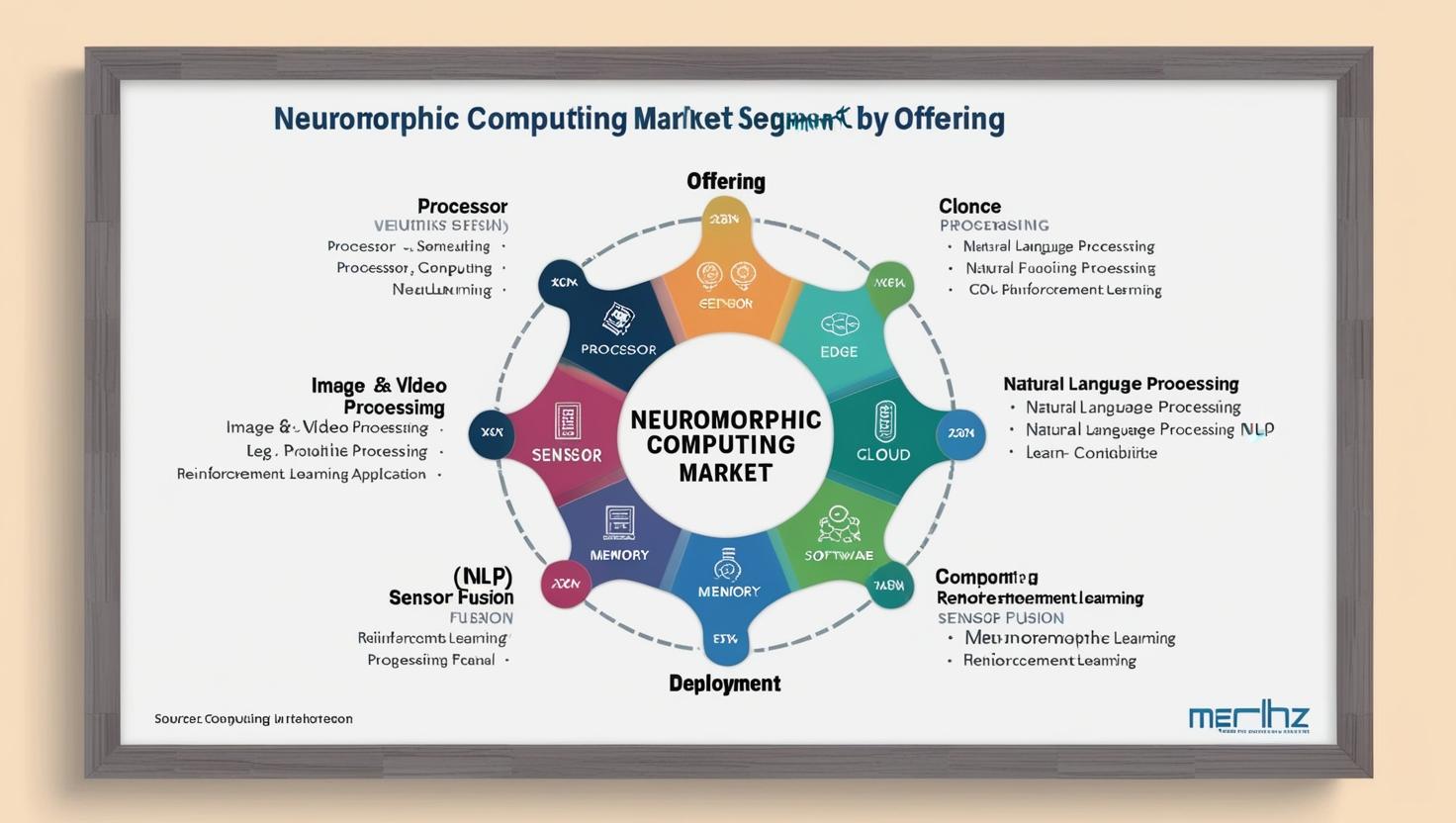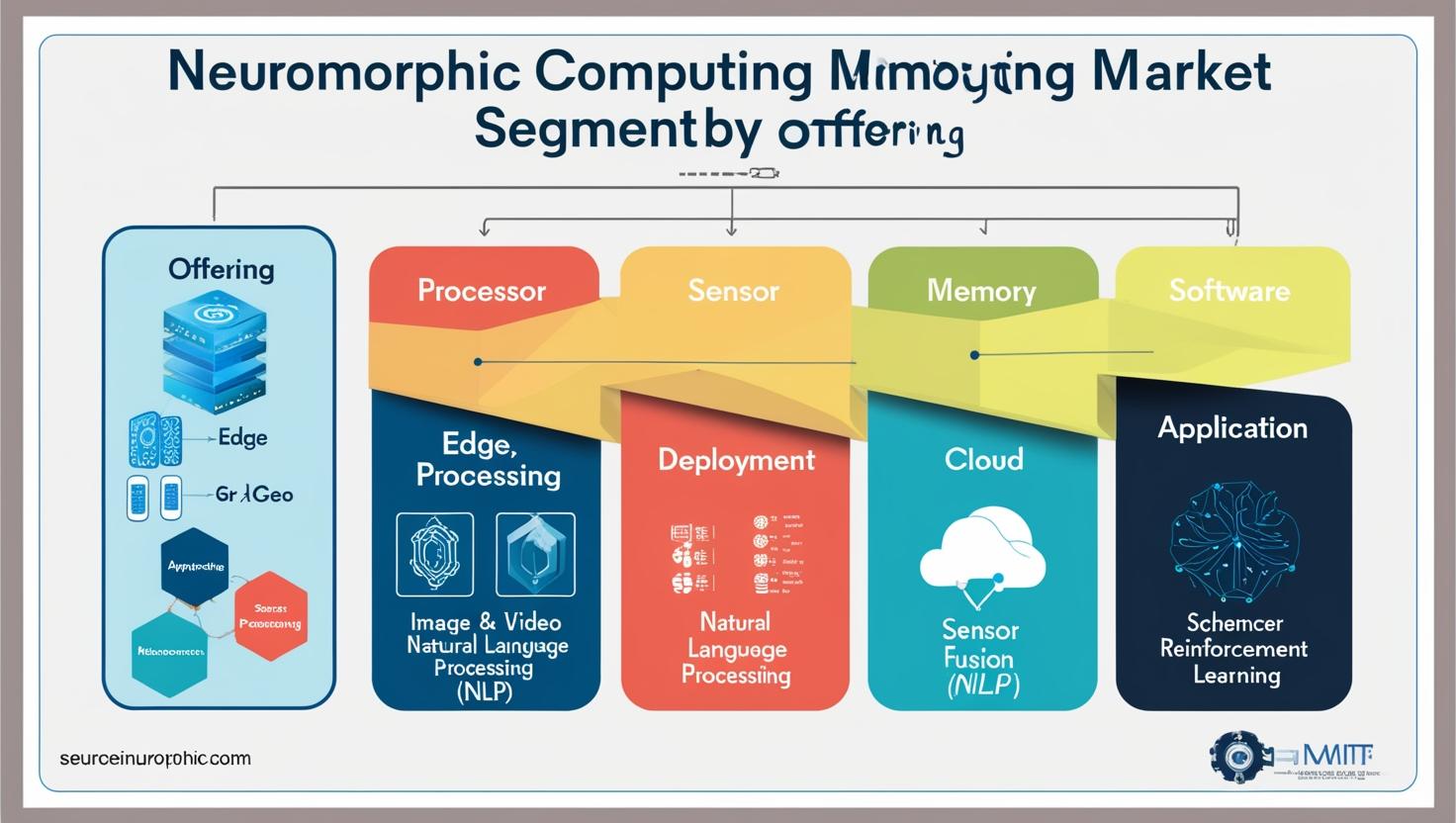Neuromorphic computing, often described as brain-inspired computing, is at the cutting edge of artificial intelligence (AI) research and development. With its ability to mimic the structure and functioning of the human brain, this emerging technology is poised to revolutionize industries that rely on machine learning, deep learning, and complex data processing. The North American neuromorphic computing industry is rapidly gaining momentum, playing a pivotal role in advancing AI technologies across sectors such as robotics, healthcare, autonomous vehicles, and smart cities.
What is Neuromorphic Computing?
Neuromorphic computing is a novel approach to computing that mimics the neural structures and processes of the brain. Unlike traditional computing systems, which rely on sequential processing of instructions, neuromorphic systems utilize specialized hardware and software that emulate the brain’s neurons and synapses. This allows for faster, more efficient data processing and the ability to solve complex tasks such as pattern recognition, sensory processing, and decision-making in real-time.
At the heart of neuromorphic computing are neuromorphic chips and circuits designed to replicate the behavior of biological neurons and synapses. These chips can process data in parallel, enabling them to perform computations much more efficiently than traditional systems. This capability is especially important for AI applications that require rapid learning and adaptation, such as autonomous vehicles or real-time medical diagnosis.

The Role of North America in Neuromorphic Computing
North America, particularly the United States and Canada, is at the forefront of neuromorphic computing innovation. The region’s advanced research infrastructure, strong presence of tech giants, and high levels of investment in AI research have enabled it to lead the global charge in developing neuromorphic technologies.
Tech companies such as IBM, Intel, and Qualcomm, along with academic institutions like MIT and Stanford, are driving forward the development of neuromorphic computing hardware and algorithms. For example, IBM’s TrueNorth chip and Intel’s Loihi neuromorphic processor are two of the most prominent neuromorphic chips being developed in the region. These processors are designed to process vast amounts of data with energy efficiency, mimicking the brain’s ability to learn and adapt.
Additionally, North America has become a hub for startups and research initiatives focused on neuromorphic computing. Investments in AI and neuromorphic technologies are fueling advancements in hardware, software, and machine learning algorithms, making it a prime location for innovation in the field.
Download PDF Brochure @
https://www.marketsandmarkets.com/pdfdownloadNew.asp?id=227703024
Applications of Neuromorphic Computing in North America
The potential applications of neuromorphic computing are vast and varied, with North America leading the way in implementing these technologies across numerous industries:
-
Autonomous Vehicles: Neuromorphic computing’s ability to process real-time sensory data makes it ideal for autonomous vehicles. These vehicles require fast and accurate processing of data from sensors like LiDAR, cameras, and radar to make split-second decisions. Neuromorphic processors enable autonomous systems to mimic human brain functions, improving their decision-making capabilities and making them more adaptive to changing road conditions.
-
Healthcare: Neuromorphic computing holds great promise for healthcare, particularly in medical imaging, diagnostics, and personalized medicine. With the ability to analyze complex data patterns, neuromorphic systems can assist doctors in diagnosing diseases more accurately and in real-time. Additionally, the energy efficiency of neuromorphic systems could allow for continuous monitoring and data processing in wearable medical devices.
-
Robotics: The robotics industry is another major beneficiary of neuromorphic computing. Neuromorphic systems can enhance the learning and decision-making capabilities of robots, enabling them to interact with their environment in a more human-like manner. This is particularly beneficial in applications such as industrial automation, where robots must respond to complex and dynamic situations.
-
Smart Cities: Neuromorphic computing can also play a vital role in the development of smart cities. By efficiently processing data from sensors deployed across urban environments, neuromorphic systems can help improve traffic management, energy distribution, and urban planning. This can lead to more sustainable and efficient cities, with reduced environmental impact and improved quality of life for residents.
-
Machine Learning and AI: As machine learning and AI technologies continue to evolve, neuromorphic computing is poised to significantly improve their efficiency. Neuromorphic processors are inherently more capable of learning from data and adapting to new information. This makes them ideal for tasks such as natural language processing, image recognition, and predictive analytics.

Key Drivers of Growth in North America’s Neuromorphic Computing Market
Several factors are contributing to the rapid growth of the neuromorphic computing industry in North America:
-
Increased Investment in AI and Machine Learning: North America’s significant investment in AI research and development has laid the foundation for neuromorphic computing technologies to thrive. Both public and private sectors are funneling funds into projects that focus on creating advanced computing systems that can process data more efficiently and solve complex problems in real time.
-
Advances in Hardware and Algorithms: Breakthroughs in neuromorphic chip design, as well as in algorithms that mimic neural processes, are driving the market forward. Companies like Intel and IBM are developing more efficient neuromorphic processors, while research institutions continue to refine machine learning techniques that can harness the full potential of neuromorphic computing.
-
Growing Demand for Real-Time Data Processing: As industries like healthcare, automotive, and robotics require faster and more accurate data processing, neuromorphic computing offers an attractive solution. The demand for real-time processing and decision-making capabilities is fueling the growth of this technology in North America.
-
Technological Synergy: Neuromorphic computing works synergistically with other cutting-edge technologies like artificial intelligence (AI), the Internet of Things (IoT), and 5G connectivity. As these technologies continue to evolve, the need for more efficient and capable computing systems, like those based on neuromorphic designs, will only increase.
Challenges and Future Outlook
Despite its promising potential, the neuromorphic computing industry faces several challenges, including the high cost of development, technical complexities, and the need for specialized hardware. However, as research progresses and more companies enter the market, these barriers are expected to diminish over time.
Looking ahead, the North American neuromorphic computing industry is expected to continue growing at a rapid pace. With increasing investments, advancements in technology, and a wide range of potential applications, neuromorphic computing is set to become a key driver of innovation across various sectors, cementing its position as a game-changer for the future of AI technologies.
The North American neuromorphic computing industry is at the forefront of the next wave of technological innovation. By mimicking the human brain’s capabilities, neuromorphic computing is paving the way for more efficient, adaptive, and intelligent systems in industries ranging from autonomous vehicles to healthcare and beyond. As investments and advancements continue, neuromorphic computing is poised to transform the future of AI, positioning North America as a global leader in this cutting-edge technology.
Frequently Asked Questions (FAQ) – North America Neuromorphic Computing Industry
1. What is neuromorphic computing?
Neuromorphic computing is a technology that mimics the neural structure and processing of the human brain to create systems capable of intelligent decision-making, learning, and adaptation. It uses specialized hardware and software to replicate the way biological neurons and synapses interact to process data efficiently.
2. How is North America contributing to the growth of neuromorphic computing?
North America, particularly the United States and Canada, is leading in the development of neuromorphic computing technologies. Major tech companies, such as IBM, Intel, and Qualcomm, alongside research institutions like MIT and Stanford, are pioneering neuromorphic processors and algorithms. The region’s high level of investment in AI research and development has also been a key driver in the industry’s growth.
3. What are the key industries benefiting from neuromorphic computing in North America?
Industries such as autonomous vehicles, healthcare, robotics, smart cities, and machine learning are seeing significant benefits from neuromorphic computing. Its ability to process complex data quickly and efficiently makes it ideal for real-time decision-making, enhanced learning, and pattern recognition.
4. How does neuromorphic computing help in autonomous vehicles?
In autonomous vehicles, neuromorphic computing enhances real-time processing of data from various sensors such as LiDAR, cameras, and radar. It enables the vehicle to make fast, accurate decisions while navigating the environment, improving safety and efficiency.
5. What are the benefits of neuromorphic computing for healthcare?
Neuromorphic computing enables advanced capabilities in healthcare by analyzing complex medical data such as imaging, patient monitoring, and diagnostic information. It allows for faster, more accurate decision-making, leading to improved patient outcomes and personalized treatments.
6. What is driving the growth of the neuromorphic computing industry in North America?
The growth of the neuromorphic computing industry in North America is driven by increased investments in AI and machine learning, advancements in neuromorphic chip design, and the growing demand for real-time data processing across various industries, including robotics, automotive, and healthcare.
